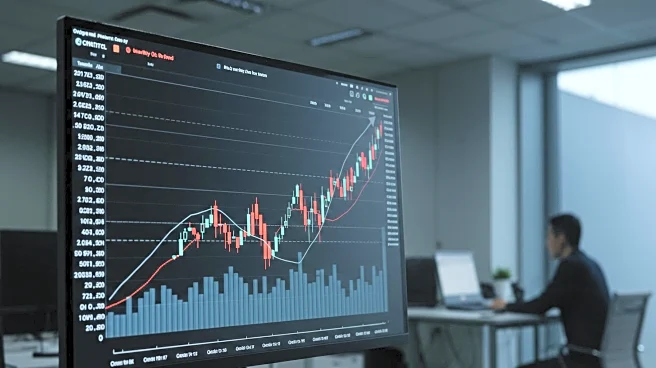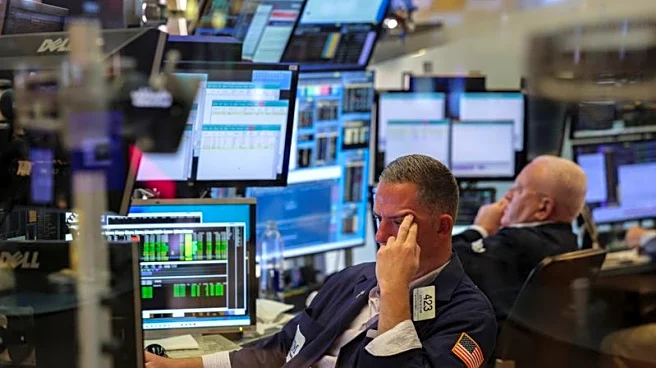What's Happening?
Global stocks experienced a slight decline on Thursday, with U.S. equities ending flat and Treasury yields rising. This followed the release of strong inflation data, which has shaken market expectations for Federal Reserve interest rate cuts. The S&P 500 managed to achieve a new closing high for the third consecutive session, while the Dow and Nasdaq showed minimal changes. The Labor Department reported a 0.9% increase in U.S. producer prices for July, surpassing forecasts and raising concerns about inflation pressures linked to tariffs. Despite this, traders still anticipate a rate cut by the Fed next month, although expectations have been slightly adjusted.
Why It's Important?
The unexpected rise in producer prices has introduced uncertainty into the market, challenging the assumption of imminent interest rate cuts by the Federal Reserve. This development could influence borrowing costs and economic growth, affecting various sectors and investor strategies. The inflation data suggests potential price pressures from tariffs, which could impact consumer spending and business operations. As traders reassess their expectations, the broader economic narrative may shift, with implications for monetary policy and market stability. The situation highlights the complex interplay between inflation, interest rates, and economic growth, with potential consequences for global investors.
What's Next?
Market participants will closely monitor upcoming economic indicators, including the Expenditures Price Index, to assess inflation trends and their impact on Federal Reserve policy. The Fed's decision on interest rates in September will be pivotal, as traders adjust their expectations based on evolving data. Geopolitical factors, such as President Trump's interactions with Russian President Putin, may also influence market sentiment and global economic dynamics. Investors will need to navigate these uncertainties, considering potential stagflation risks and adjusting their strategies accordingly.












